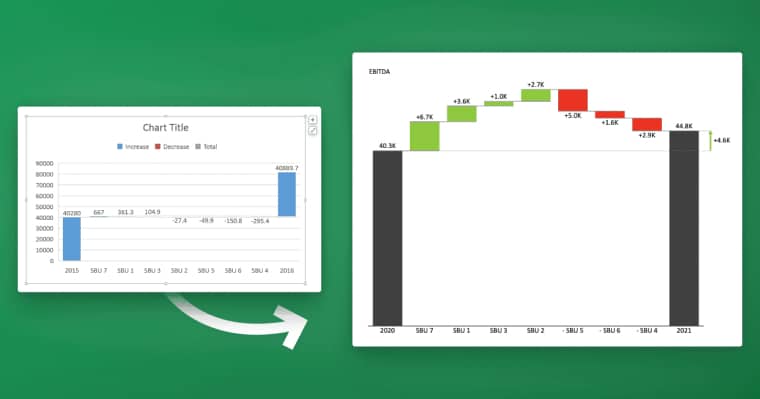Sorting months in Power BI is an essential feature for creating effective data visualization and analysis. This functionality helps in arranging monthly data in a meaningful order, such as chronological, alphabetical, or custom order. In this article, we will discuss in detail why sorting months is important, the different ways to sort months in Power BI, and tips and tricks to enhance the sorting process.
Table of Contents
Why Sorting Months in Power BI is Important
Sorting months in Power BI is an essential feature because it helps in analyzing monthly data in a meaningful way. For instance, if you are analyzing sales data, you may want to sort the data by month to identify the months when sales were the highest or lowest. Without sorting, the months may appear in a random order, making it challenging to identify trends or patterns in the data.
Another reason why sorting months in Power BI is important is that it allows for easier comparison between different time periods. By sorting the months in chronological order, you can easily compare data from one month to the same month in a different year. This can be particularly useful when analyzing seasonal trends or identifying changes in patterns over time.
Additionally, sorting months in Power BI can help with data visualization. When creating charts or graphs, having the months sorted in a logical order can make the data easier to read and understand. It can also help to avoid confusion or misinterpretation of the data, which can occur when the months are not sorted in a meaningful way.
Understanding the Need for Sorting Months in Power BI
Before diving into the ways to sort months, it’s essential to understand the need for sorting months in Power BI. Often, when importing monthly data from external sources to Power BI, the months may not appear in the desired order. For instance, if the date format is in YYYY-MM-DD, Power BI may sort the months alphabetically, resulting in an incorrect sequence. Sorting months in the right order makes it easier to identify trends, analyze data, and communicate insights effectively.
Furthermore, sorting months in Power BI is crucial for creating accurate visualizations and reports. When the months are not sorted correctly, it can lead to misleading charts and graphs, which can result in incorrect conclusions and decisions. Sorting the months in the correct order ensures that the data is presented accurately and helps in making informed decisions based on the insights gained from the data.
Different Ways to Sort Months in Power BI
There are different ways to sort months in Power BI. The most common ways are to sort by month name, month number, or chronologically. Let’s discuss each of these in detail.
Sorting by month name arranges data in alphabetical order based on the month’s name. For example, January, February, March, and so on. On the other hand, sorting by month number arranges data based on the numerical value of the month. For example, 1 for January, 2 for February, and so on. Sorting by month number is useful when analyzing data that spans across multiple years, as it maintains a consistent order across the entire data set.
To sort months chronologically in Power BI, select the data column containing the dates and choose the “Sort Ascending” option in the modeling tab. This will arrange the data in ascending order based on the date field. Alternatively, you can use the “Sort by Column” feature to sort the data based on a specific column’s values.
Using DAX (Data Analysis Expressions) formula is another way to sort months in Power BI. You can use the DAX formula “EOMONTH” (End of Month) to calculate the last day of the month for each date and sort the data based on the calculated values. For example, the formula “EOMONTH(‘Sales'[Date])” will return the last day of each month for the Sales Date column.
Custom Hierarchies are another way to sort data in Power BI. You can create a custom hierarchy by combining multiple data fields, such as Year-Month or Month-Quarter-Year, and sort the data based on the hierarchy. This approach is useful when analyzing data across multiple time periods, such as years, quarters, and months, and maintaining a consistent order throughout the data set.
Drill-through is another way to sort months in Power BI. You can create a drill-through page that displays data for a specific month, and then sort the data based on the selected month. For example, you can create a drill-through page that displays sales data for a specific month, and then sort the data based on the selected month. This approach is useful when analyzing data for a specific time period and comparing it to other time periods.
Tips and Tricks for Sorting Months in Power BI
Here are some tips and tricks that can help you enhance the sorting process in Power BI:
- Ensure that the date format is consistent throughout the data set to avoid errors while sorting.
- Use the “Sort Ascending” or “Sort Descending” option to sort data quickly.
- Use the “Sort by Column” option to sort data based on a specific column’s value.
- Use DAX formulas to create custom sorting rules.
It is important to note that sorting months in Power BI can be tricky, especially when dealing with data from different regions or countries. One useful tip is to create a custom column that converts the month name into a number, which can then be sorted easily. Another approach is to use the “Sort by Column” option and create a separate column that assigns a numerical value to each month based on its position in the year. These techniques can help you sort months accurately and efficiently in Power BI.
Common Issues Faced While Sorting Months in Power BI and Their Solutions
Here are some common issues that you may face while sorting months in Power BI and their solutions:
- Inconsistent date formats: Ensure that the date formats are consistent throughout the data set.
- Incorrect sequence: Ensure that the data is sorted in the right order, such as chronological or alphabetical.
- Invalid dates: Power BI may skip invalid dates, resulting in incorrect sorting. Ensure that the dates are valid and in the right format.
- Missing data: Sometimes, data may be missing, resulting in an incomplete sequence. Ensure that the data is complete and does not have any gaps.
Another common issue that you may face while sorting months in Power BI is the presence of duplicate dates. Duplicate dates can cause confusion and affect the accuracy of your data. To avoid this issue, you can remove the duplicates by using the Remove Duplicates feature in Power Query Editor. This feature allows you to select the columns that you want to check for duplicates and remove them from your data set.
Best Practices for Sorting Months in Power BI
Here are some best practices that you can follow while sorting months in Power BI:
- Ensure that the date column has a data type of “Date/Time” to avoid errors and enable the sorting feature.
- Ensure that the date format is consistent throughout the data set.
- Use the most appropriate sorting method based on the data type being analyzed.
- Create custom hierarchies for complex data sets where multiple time periods are being analyzed.
- Validate the data set for missing or invalid data before sorting.
It is also important to consider the language and regional settings of the data being analyzed. Power BI allows for sorting by month name, but this feature may not work correctly if the language and regional settings are not set appropriately. It is recommended to ensure that the language and regional settings are consistent throughout the data set to avoid any issues with sorting by month name.
Enhancing Data Visualization by Filtering Sorted Months in Power BI
Filtering sorted months in Power BI is an effective way to visualize data for specific time periods. For instance, you can filter data to show only the top or bottom months in terms of sales, or filter data for a specific year or quarter. This approach enables you to communicate insights effectively and highlight key trends in the data.
Another benefit of filtering sorted months in Power BI is that it allows you to focus on specific data points and analyze them in more detail. By filtering out irrelevant months, you can zoom in on the data that matters most and gain a deeper understanding of the underlying trends and patterns.
Furthermore, filtering sorted months in Power BI can help you identify outliers and anomalies in your data. By examining the data for specific time periods, you may notice unusual spikes or dips in sales or other metrics. This can lead to further investigation and analysis, helping you to uncover hidden insights and opportunities.
Analyzing Sorted Month Data for Better Business Insights
Analyzing sorted month data in Power BI enables businesses to identify trends and patterns in the data, enabling better decision-making. For instance, businesses can analyze sales data to identify the months when sales were high or low and adjust their marketing strategies accordingly. Similarly, businesses can analyze employee absenteeism data to identify patterns and take corrective actions to improve employee engagement.
Incorporating Sorted Month Data into Dashboards and Reports
Incorporating sorted month data into dashboards and reports is an effective way to track business performance over time. Dashboards and reports can be customized to include specific sorted data visualizations, such as bar charts or line graphs. This approach enables businesses to monitor key performance indicators and make data-driven decisions.
How to Automate the Process of Sorting Months in Power BI
Automating the process of sorting months in Power BI can save time and increase efficiency. You can use Power Query Editor to create a sorting rule that is automatically applied when importing data into Power BI. This helps in maintaining a consistent order of months without manual intervention. Additionally, while Power Automate is not typically used for data import and sorting within Power BI, it can be used to automate other related workflows that might be part of a broader data management process.
Conclusion
Sorting months in Power BI is a critical feature that enables businesses to analyze monthly data in a meaningful way. There are different ways to sort data, such as sorting by month name, month number, or chronologically. Following best practices and validating data sets before sorting can help avoid errors and improve the accuracy of the data. Incorporating sorted data into dashboards and reports can help businesses monitor performance over time and make data-driven decisions. By following the strategies outlined in this article, businesses can effectively sort and analyze monthly data in Power BI and gain valuable insights into their business operations.














